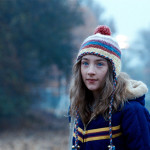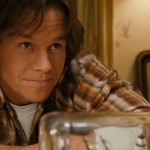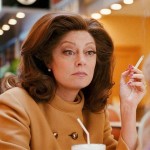Friends tell me the film of The Lovely Bones is not a patch on Alice Sebold‘s debut novel, but then that is par for the course so let’s start by disregarding the origins of this story. I’ll also disregard for these purposes the premise of the story, concerning afterlife and ultimately an idyllic representation of heaven, nirvana, whatever you want to call it. Instead let’s focus on its merits of this story as a movie in the safe hands of Peter Jackson, these days more associated with Middle Earth wizardry, hobbits and suchlike.
As a story, it’s essentially very simple: a girl is raped and murdered (the movie goes light on the rape bit) but her spirit can’t leave behind her family, and continues to haunt her murderer in the hope of gaining peace and finding ways of tipping off people and exposing clues to be discovered. She is “in between” heaven and earth, a strange shifting world heavy on symbolism and metaphor, not to mention glorious landscapes. After all, what Jackson does best of all is make any movie look ravishingly perfect, and this one succeeds visually beyond the power of words to describe. Trust me, you need to see it.
Anyway, back to the plot: needless to say our heroine does eventually reach her personal heaven, karma is exacted on her killer and the family achieves closure and moves on, still cherishing the memory of the lovely Susie Salmon, who is, as described by the boy she loves, beautiful. And the title? From the novel’s conclusion:
These were the lovely bones that had grown around my absence: the connections—sometimes tenuous, sometimes made at great cost, but often magnificent—that happened after I was gone. And I began to see things in a way that let me hold the world without me in it. The events my death brought were merely the bones of a body that would become whole at some unpredictable time in the future. The price of what I came to see as this miraculous body had been my life.
Some critics claimed the film could not decide what it wanted to be, and was therefore stuck in the middle between shock horror and cloying sentimentality. Supernatural thriller or drama would be one valid description, but you sense that what Jackson aims to do is convey the ethereal philosophy woven into Seybold’s book concerning the need to let go of the past in order to achieve contentment and living life to the full. You may take a different view, and arguably Jackson has applied a heavy Spielberg-esque hand in this respect, but I can forgive him some whimsy.
As for the horror aspects, Wikipedia tells the story:
According to the British Board of Film Classification (BBFC), the rating given to The Lovely Bones received 24 objections, more than any other movie in 2010. The BBFC report states, “Many found the film to be a shocking and upsetting experience. The scene in which young Susie is entrapped by the killer, and the subsequent sequence in which the killer soaks in a bath after the murder, were compared by some complainants to scenes in ‘18’ rated horror films.” The BBFC rated the movie a 12A, and many complained that the movie was upsetting for a younger audience. Nevertheless, the BBFC defended its rating: “The Lovely Bones lacked any explicit detail of the murder and any sexual elements were downplayed. The audience’s sympathies remain entirely with the family and the film had many positive messages about life.”
I said shock horror, but this is far from exploitative schlock-horror. Certainly true that the violence is implied, though the sense of menace is certainly intact. In fact, Susie meets the other victims of this murderer and sees the circumstances under which they were discovered. This is certainly not a movie glamourising or glorifying rape and murder, though many might argue that it does not sufficiently punish the crimes to demonstrate the moral distinction. I wouldn’t necessarily agree, though there is a sense in which actions are being explored with the grief and loss being slightly disembodied and sanitised through the heavenly lens.
However, in my opinion the movie succeeds far more than it fails – in spite of the saccharine, homespun philosophy and moral detachment. The success has more depth and weight than CGI graphics too; in fact, it is primarily a conspiracy between two actors to turn what could have been a flat rendition into something with sparkle and thought: the beautiful and perfectly cast Saorise Ronan, just as she was in Atonement; and the brilliantly effective Stanley Tucci, who as serial killer George Harvey will chill you to the marrow, especially when he smiles. Tucci is a remarkably versatile character actor, but those who saw his Richard Cross in Murder One will know how brilliantly he can build menace into a very unique role.
Essentially Ronan and Tucci steal the show as the two extreme poles, connected once and then eternally, but the supporting cast works hard, including well-known faces like Mark Wahlberg and Michael Imperioli (Chris in The Sopranos.) Watch out also for a genius comic cameo by Susan Sarandon as Grandma Lynn.
Meanwhile, I’m delighted to report that this is a movie that justifies a second or even a third viewing. There are not too many around, but it’s good to know that source material can be adapted with some intelligence, even allowing for flaws, and to examine emotive subjects from a fresh angle. I recommend you see this movie, especially if you haven’t read the book.




















